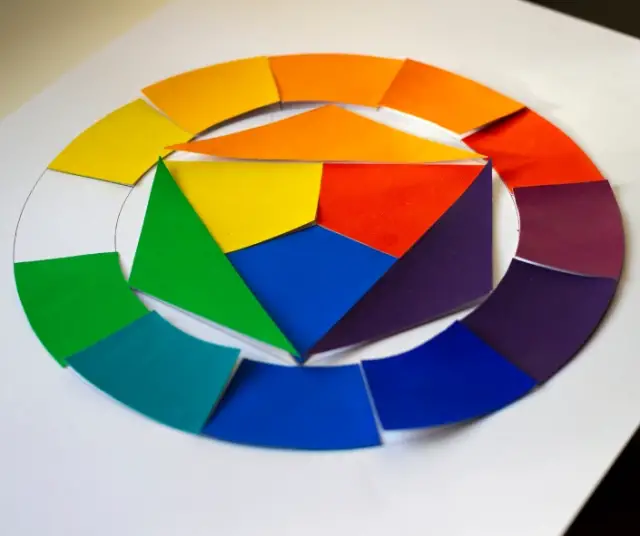Mixing colors is one of the fundamental skills for any artist or designer. Whether you're painting a canvas, creating digital illustrations, or choosing the color palette for a graphic design project, understanding how to combine and mix colors will help you achieve impressive results.
Color Theory: Understanding the Basics
Color theory is the foundation upon which all art and design related to color is built. Understanding its basics is essential for anyone who wants to work with colors effectively. At its core, color theory is based on the color wheel, a visual tool that organizes colors according to their relationships and properties.
On the color wheel, colors are divided into three main categories: primary, secondary, and tertiary. The primary colors are red, blue, and yellow, and they are the fundamental building blocks for all other colors. Secondary colors are formed by mixing two primary colors in equal parts: red and blue create violet, blue and yellow produce green, and yellow and red create orange. Tertiary colors, on the other hand, are formed by mixing a primary color with an adjacent secondary color on the color wheel, such as red-orange (mixture of red and orange) or blue-violet (mixture of blue and violet).
It is important to understand the two main color mixing systems: additive and subtractive. The additive model is used in light mixing, such as in television screens and computer monitors, where the combination of red, green, and blue lights produces a wide range of colors. On the other hand, the subtractive model is used in pigment mixing, such as in painting and printing, where mixing cyan, magenta, and yellow pigments produces a variety of colors.
In addition to these basic concepts, color theory also covers more advanced topics such as saturation, brightness, color harmonies, and color schemes. Saturation refers to the intensity or purity of a color, while brightness refers to its lightness or darkness. Color harmonies are combinations of colors that are visually pleasing and balanced, such as complementary color schemes (opposite colors on the color wheel) or analogous color schemes (adjacent colors on the color wheel).
Types of color mixing
There are two main methods for mixing colors: additive mixing and subtractive mixing.
Additive Mixing : This method involves combining light colors to create a wide range of tones. It is the approach used in electronic devices, such as televisions and computer monitors. The primary colors in this model are red, green and blue (RGB). By combining these colors in different proportions, you can create an infinite variety of shades.
Subtractive mixing: This method is based on the absorption of light to create colors. It is used in mixing pigments, such as painting and printing. The primary colors in this model are cyan, magenta and yellow (CMY). By mixing these colors, light is absorbed and new tones are created. The mixture of all subtractive colors produces black.
Mixing primary colors
To start mixing colors, you first need to have a solid understanding of primary colors. In additive mixing, the primary colors are red, green, and blue (RGB), while in subtractive mixing they are cyan, magenta, and yellow (CMY).
Additive mixing : By combining colors of light, as on a television screen, you can create a wide range of colors. For example, mixing red and green produces yellow, mixing green and blue produces cyan, and mixing red and blue produces magenta.
Subtractive mixing: In pigment mixing, primary colors are mixed to create a variety of shades. For example, mixing cyan and magenta produces blue, mixing cyan and yellow produces green, and mixing magenta and yellow produces red.
Mixing secondary and tertiary colors
Once you understand how to mix primary colors, you can move on to creating secondary and tertiary colors.
Secondary colors: Secondary colors are formed by mixing two primary colors. In the additive mixture, the secondary colors are yellow, cyan and magenta. In subtractive mixing, the secondary colors are red, green, and blue.
Tertiary Colors: Tertiary colors are formed by mixing a primary color with an adjacent secondary color. For example, mixing red with orange produces red-orange, mixing red with violet produces red-violet, and so on.
Color mixing techniques
There are several techniques you can use to mix colors effectively:
Direct Blending: Simply apply colors next to each other and blend them with a brush or blending tool.
Wet-on-wet mixing: Applying wet paint to a wet surface to achieve smooth transitions between colors.
Layering Mixing: Layering colors on top of each other to create complex tones and shades.
Finger Blending: Use your fingers to blend colors directly on the work surface, especially effective with watercolor and acrylic paints.
Practical tips for mixing colors
Practice regularly: Constant practice is key to improving your color mixing skills. Spend time regularly experimenting with different combinations and techniques.
Observe and analyze: Study how colors interact in nature and in existing works of art. Observe how professional artists handle color mixing and try to apply those techniques in your own work.
Experiment with different mediums: Don't limit yourself to just one medium. Experiment with oil paints, acrylics, watercolors, colored pencils, and digital media to expand your understanding of color mixing in different contexts.
Keep a Color Journal: Keep track of your color mixing experiments in a journal. Write down the combinations that work well and those that don't, along with your observations and thoughts about each experiment.
